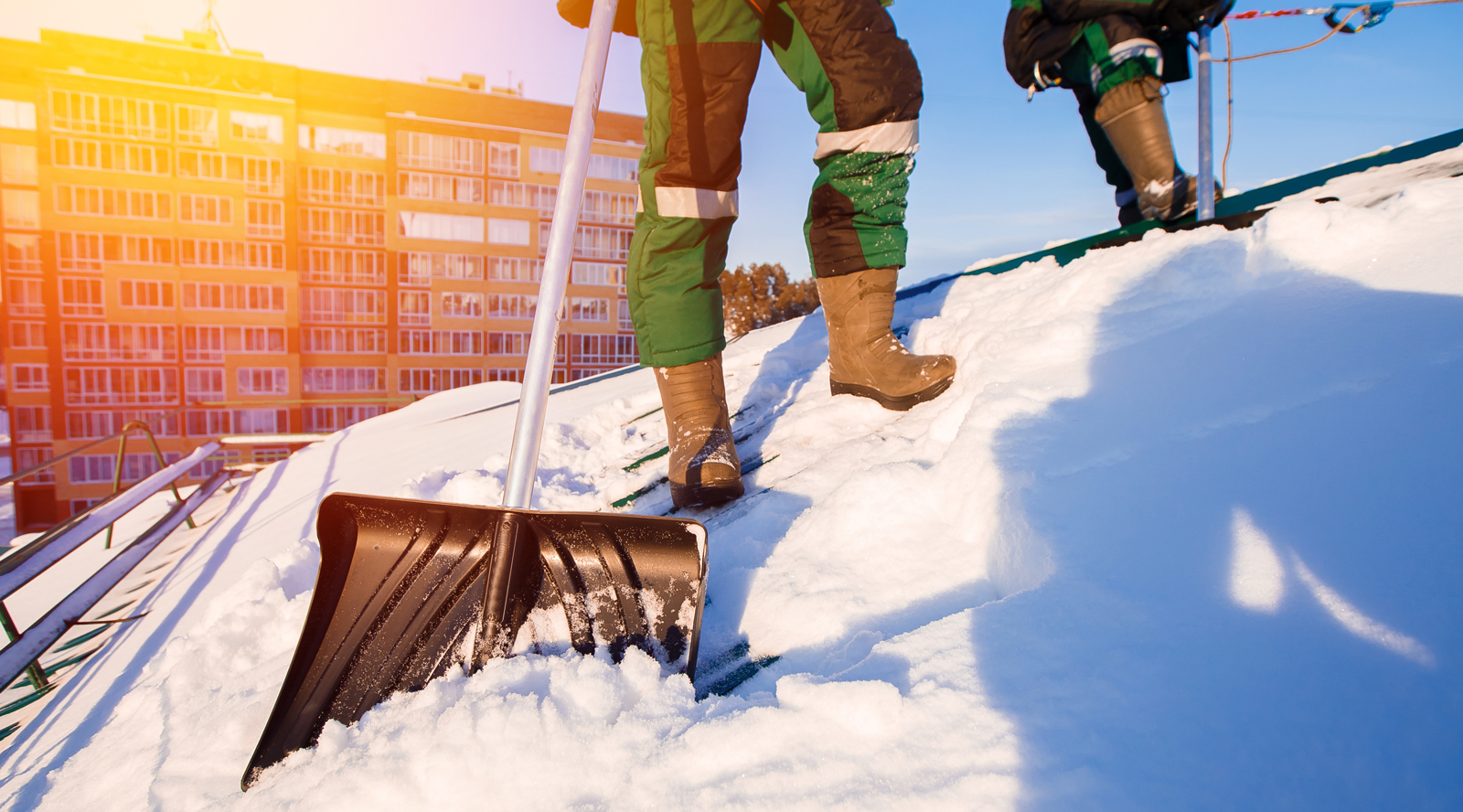Winter brings unique challenges to the outdoor workplace. Rain, fallen leaves, ice and snow can make worksites slippery, increasing the risk of slips, trips and falls. Shorter days and bad weather can also reduce visibility drastically, raising the risk of accidents. Finally, colder temperatures and strong winds can make it difficult for workers to maintain their body temperature, leading to cold stress and other cold-related illnesses and injuries.
But there are plenty of things that you can do to protect your outdoor workers and to reduce the risk of accidents and illnesses sparked by the harshest season of the year. To help you, here is our detailed guide.
Train your team on cold-related illnesses
Cold, wind and wet weather can have a powerful effect upon the body if it is overexposed to the elements. Heat loss is particularly rapid in conditions when the weather is extremely cold, especially if there is an icy wind too. It is therefore important that your team know the signs and symptoms of mild and severe cold-related illnesses so that they can protect themselves and their colleagues.
Cold stress is a key one to look out for. It occurs when the skin temperature drops, which then causes the body’s internal temperature to fall too. If cold stress is not spotted and the body allowed to recover, it can lead to more serious cold-related illnesses, such as frostbite and hypothermia.
Frostbite
Frostbite occurs when the body is exposed to the cold for a long period of time, or when bare skin comes into contact with extremely cold objects, such as metal tools left out in the snow. This exposure causes the skin and deeper tissues to freeze, causing numbness, tingling, aching or bluish/pale waxy skin. It usually affects the extremities, such as the face, fingers and toes, and if it is not caught early, it can cause permanent damage.
Hypothermia
Hypothermia occurs when the body cannot maintain its temperature and it begins to shut down blood flow to the extremities in order to prevent further heat loss.
Even mild hypothermia can have dangerous consequences as it can cause a loss of coordination, confusion and mental impairment, all of which can affect the safety of the individual while working. More severe hypothermia results in blue skin, dilated pupils and a slow pulse. It can also lead to a loss of consciousness and must be treated as a medical emergency.
Workers should also look out for chilblains and trench foot. These are not as serious as hypothermia but can still cause a great deal of discomfort if left untreated.
Chilblains are painful inflammations of the small blood vessels in the skin and can cause redness and inflammation. Trench foot occurs in cold and wet conditions and is a result of dying skin tissue. It can cause redness, numbness, swelling and blisters. If very severe, it can lead to gangrene.
Finally, alert your workers to the fact that cold weather can aggravate other health problems, such as hand-arm vibration syndrome or musculoskeletal disorders.
Wrapping up warm
In order to stay warm, safe and visible during the winter months, your staff need to have the right clothing and protective gear.
Layers
To maintain body temperature, layering is key. But workers must never be encouraged to add layers over the top of any hi-vis clothing. When ordering jackets and other hi-vis clothing, encourage workers to think about what layers they may need to wear underneath in order to ensure that their movement is never restricted.
A combination of three layers is one of the best ways to maintain warmth while keeping workers dry. A good base layer may be made of wool, as this wicks away moisture while keeping the wearer warm. Another wool mid-layer will then continue to trap heat against the body. The final layer should be water and wind-resistant, as well as being breathable.
When choosing jackets, consider whether they allow enough room for movement and whether a hood will be a help or a hindrance – they must not interfere with protective headgear.
Gloves
Thermal gloves with water resistance will be ideal for keeping hands warm. However, you may also need to consider the need for dexterity. A lighter glove may be a good alternative if your workers will be likely to remove something thicker in order to perform their tasks.
Hats
A thermal hat is perfect for preventing heat from escaping from the head. However, if your workers need to wear protective headgear, this could interfere. Instead, think about investing in thermal hat liners.
Boots
Good boots will not only keep feet warm and dry, but they can also help to prevent workers from falling on slippery ground. They may need to be bought in a slightly larger size in order to accommodate thicker thermal socks.
Spares
Ideally, your workers should bring spare clothes with them. This means that they can change if their clothing gets wet or sweaty.
 Regular breaks
Regular breaks
To help your workers stay warm during colder weather, you will need to provide them with a shelter so that they have somewhere to go during their breaks to warm up. More regular breaks should also be scheduled so that your workers have time to recover from exposure to the cold. This may need to be planned carefully so that everyone gets regular breaks without breaking social distancing rules.
Encourage them to have regular hot drinks or hot soup too. It is best not to rely too heavily on tea, coffee and other caffeinated drinks as these can cause the blood vessels to shrink. Hot squash or sports drinks are excellent alternatives.
A safer environment
In bad winter weather, you need to make the work environment safe.
Pathways should be cleared, grit can be scattered and floormats can be placed in entranceways in order to prevent slips when coming inside from the cold and wet.
You may also need to think about introducing more lighting to the workplace. Bad weather can reduce visibility and winter days can be very short, so factor this in when setting things up.
If your workers need to shovel snow in order to clear walkways and other key areas, encourage them to warm up their muscles first by walking around for a few minutes. This will help to reduce the risk of injury.
Buddy up
By partnering up your team, you can encourage your workers to look out for signs of cold stress and ensure that breaks are taken when necessary.
Drive safe
Outdoor workers may be required to drive to different sites their vehicles should be equipped for bad weather. You may even want to consider winter tyres if the winter months are particularly harsh. And if snow is on the way, ensure your team has an emergency kit that includes a shovel, food, mobile phone and a warm woollen blanket.

Carry out a risk assessment
Before working in cold weather, a risk assessment should always be carried out. Use the weather forecast to guide you and consider the risk of ice, wet leaves, frost and snow. Decide what measures need to be in place to reduce the risk of falls in entranceways and pathways, whether there is enough adequate shelter for breaks and if visibility across the site is good.
You should also consider the more vulnerable people within your workforce. Cold weather can exacerbate cardiovascular disease, diabetes and hypertension. The buddy system can be an ideal way of keeping an eye on these members of the team to make sure they stay safe and healthy.
Keeping your site safe in winter
Adapting your risk assessments and occupational health& safety policies for the cold and wet winter months is essential for keeping your workforce safe when the temperature drops.
To reduce or mitigate risk, a comprehensive set of processes can help to protect your workforce. ISO 45001 is an ideal way of implementing a strong set of procedures that demonstrate that you take safety seriously. It shows that you operate to best practice and that you are compliant with the latest legislation, as well as being committed to better management of health & safety risks.
To find out more about how ISO 45001 can help your business to boost its reputation and keep staff safe, happy and healthy, get in touch with us at 0333 344 3646 or [email protected].

